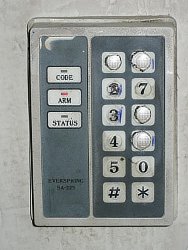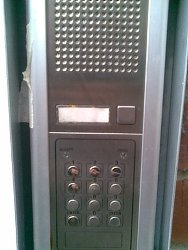Information Leakage from Keypads
Can anyone guess the entry codes for these door locks?
There are 10,000 possible four-digit codes, but you only have to try 24 on these keypads. The first is most likely 1986 or 1968. The second is almost certainly 1234.


 Subscribe to comments on this entry
Subscribe to comments on this entry
Joel F • July 2, 2009 12:39 PM
The first may have few possibilities, but I would start with 1968, followed by 1986.